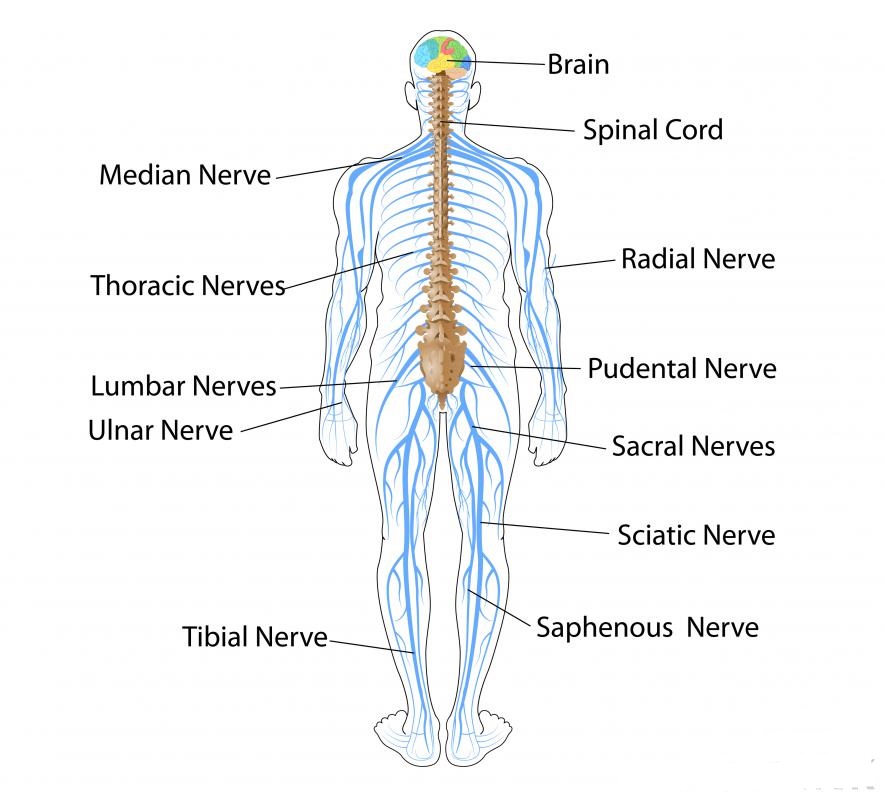THE NERVOUS SYSTEM

The nervous system is an organ system made up of a network of cells called neurons. The central nervous system is made up of the brain and spinal cord. The peripheral nervous system is made up of neurons and clusters of neurons called ganglia as well as the nerves connecting them to each other and the central nervous system.
Think of the nervous system as a very important communication network. The brain is the headquarters of this network. Your brain is made up of around 100 billion nerve cells. The surface of the brain is wrinkled with deep grooves divided into sections. Your brain is encased in the protective bone structure called the skull.
The brain acts like a supercomputer that transmits instructions in the form of nerve impulses. These nerve signals travel from the brain along the spinal cord and along the vast network of nerves that run throughout the body. These nerve signals instruct different body parts to carry out certain tasks such as.
- Breathing
- Digestion
- Body movement
- Heartbeat
- Eyes blinking
The brain is divided into three main sections. The sections are called the cerebrum, the cerebellum, and the brain stem. The cerebrum makes up the larger portion of the brain. The cerebellum is underneath the back part of the cerebrum. The brain stem connects with the spinal cord at the base of the brain.

CEREBRUM
Your cerebrum is the part of the brain that solves problems and makes wishes. Thinking and reasoning take place in your cerebrum. Speech, language, and emotions also come from the cerebrum, especially your cerebral cortex. The cerebral cortex is the outer part of the cerebrum.
Your cerebrum also gets signals from your senses. Nerves from your eyes and ears go to parts of the cerebrum that allows you to see and hear. Nerves carry signals to your cerebrum that allow you to feel, smell, and taste.
Your cerebrum transmits messages along nerves. The messages instruct your muscles to contract and expand which allows for movements such as walking and running.
THE CEREBELLUM
Your cerebellum directs and fine-tunes your body movements. While the cerebrum might tell your hands and arms to swing a bat, the cerebellum controls the accuracy of how you swing the bat to hit the ball.
Your cerebellum helps your fingers to do skill-oriented tasks such as playing musical instruments. It helps you keep your balance when you run, ride a bike, or make agile movements.
THE BRAIN STEM
Your brain stem takes care of all the involuntary activities in the body. These actions happen in your body without your conscious effort. It keeps your heart pumping, It keeps your lungs breathing, makes your eyes blink, and It pulls your hand back really fast if you touch something that causes pain such as a pin or a hot pot.



